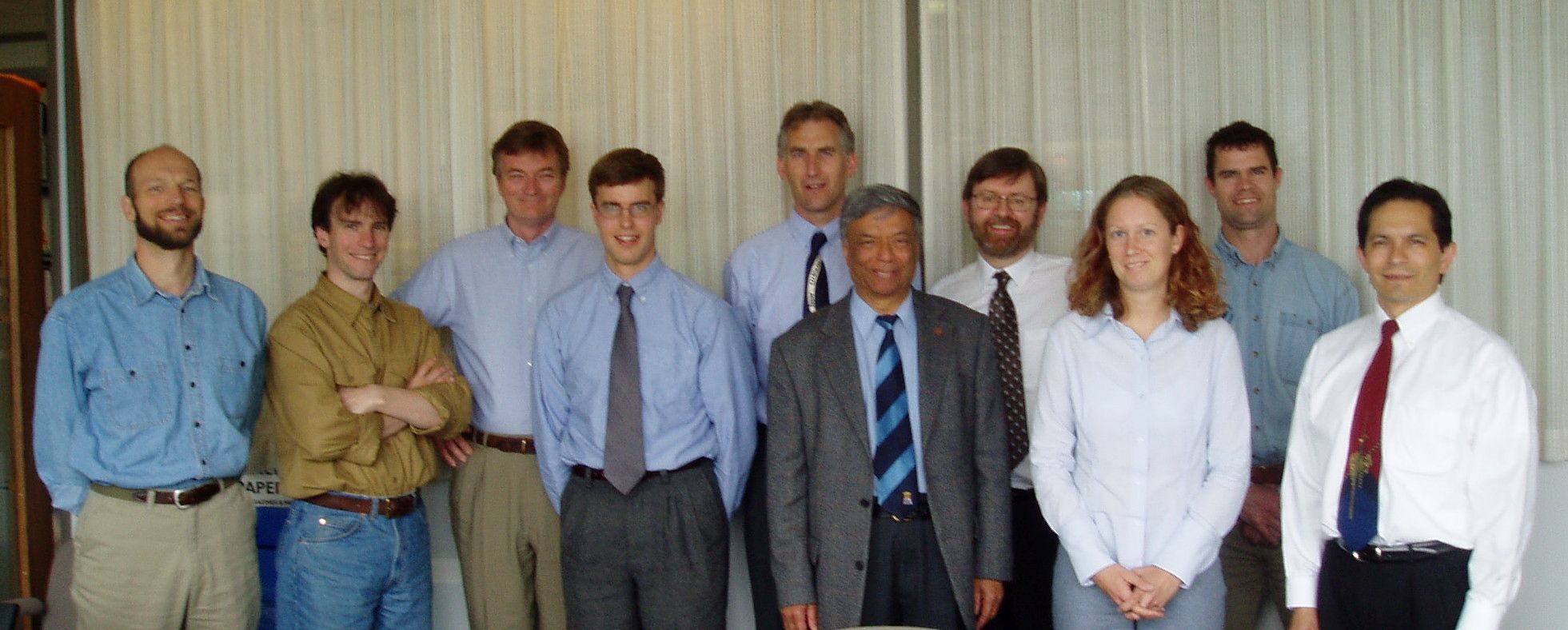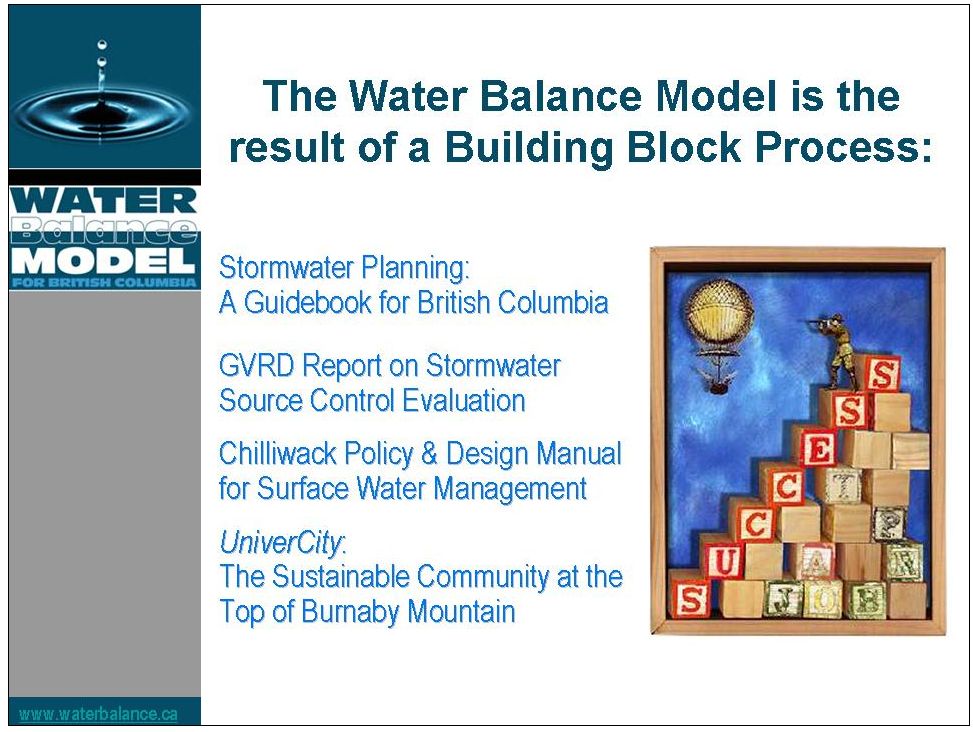2002 Water Balance Forum: Metro Vancouver hosted the inaugural meeting of prospective partners that launched the inter-governmental initiative (July 2002)
Note to Reader:
The WBM is the outcome of a building block process that has depended on the commitment of a number of organizations, and especially the efforts of the champions within those organizations, to produce a series of deliverables that successively advanced the practice of rainwater management within British Columbia.
Evolution of the Water Balance Model
The genesis of the WBM”s development was UniverCity, the sustainable community being built adjacent to Simon Fraser University atop Burnaby Mountain. Translating high expectations for this “green” development into practical design guidelines meant revisiting accepted drainage engineering practice; this need for innovation eventually led to the WBM”s development.
In 2001 the Stormwater Interagency Liaison Group (SILG), a technical committee of the Greater Vancouver Regional District, recognized the value of the water balance approach and funded the development of a working model to assess the affordability and feasibility of site design solutions for achieving performance targets.
The results of this applied research were incorporated in Stormwater Planning: A Guidebook for British Columbia, funded in large part by Environment Canada and released by the Province of British Columbia in June 2002. This guidance document, founded on BC case study experience, formalized a science-based understanding to set performance targets for reducing rainwater runoff volumes.
The Chilliwack Manual was the feedback loop for vetting the Guidebook content and the water balance methodology; in turn, the feedback loop for the Chilliwack Manual was a set of guidelines that were tested through pilot applications on development projects. The approaches pioneered in Chilliwack were also incorporated in the Guidebook, as were Chilliwack”s Design Guidelines for Developers.
In July 2002 the Inter-Governmental Partnership was formed to develop the WBM as an extension of the Guidebook. It began as a subgroup of SILG and quickly expanded to become a provincial group with municipal representation from four regions: Greater Vancouver, the Fraser Valley, Vancouver Island and the Okanagan Valley.

The original Water Balance project team – 2003 (Ed von Euw, Remi Dube, Doug Backhouse, Patrick Graham, Ted van der Gulik, Dipak Basu, Kim Stephens, Laura Maclean, Richard Boase, Dan Medina)
Inaugural Partners Forum
“The inaugural Water Balance Partners Forum was held on July 17, 2002,” recalls Kim Stephens.
 “Hosted by Metro Vancouver, the purpose of the forum was to secure financial commitments from willing federal, provincial and local governments.”
“Hosted by Metro Vancouver, the purpose of the forum was to secure financial commitments from willing federal, provincial and local governments.”
“Ted van der Gulik and Laura Maclean stepped forward to provide the leadership that would be necessary to take the Water Balance Model idea and implement it.”
“Ted and Laura represented the Province and Environment Canada, respectively, and agreed to serve as Co-Chairs.”
“The fact that the Water Balance initiative would be led by the two senior governments resonated with the local government representatives.”
Project Budget & Financial Commitments
“At that early stage in the process, we had established a ballpark budget of $150,000 to develop the Water Balance Model in phases. We were not yet thinking of an online tool.”
“The group quickly established that local governments would each contribute $5000.”
“The pivotal moment in the inaugural forum occurred when the Ministry of Environment representatives announced that their Ministry would commit $25,000.”
“Metro Vancouver immediately followed with a commitment of $20,000. With two funders contributing one-third of the budget, the Water Balance Model project was well and truly launched.”
“The forum outcomes included formation of an advisory committee to provide oversight and guidance during project implementation.”
“Within six months, the entire $150,000 was secured. The rest is history, as they say,” concludes Kim Stephens.
Vision for Phased Implementation
“For the purposes of the forum, a key document was a Backgrounder,” recalls Ted van der Gulik, Chair of the Inter-Governmental Partnership.
“It described the vision for modeling multiple land uses and multi-year continuous simulations.”
“In addition to establishing a vision for the evolution of the WBM, the Backgrounder developed an estimate of the effort require to transform the original Excel spreadsheet into an Internet-based tool.”
To Learn More:
Download the AGENDA for the inaugural Water Balance Model Partners Forum. This provides insight into an interesting historical retrospective.
Download Water Balance Model Backgrounder. This is a valuable historical document because it outlines the work plan for transforming the original Excel spreadsheet tool for use on a web-based platform.



